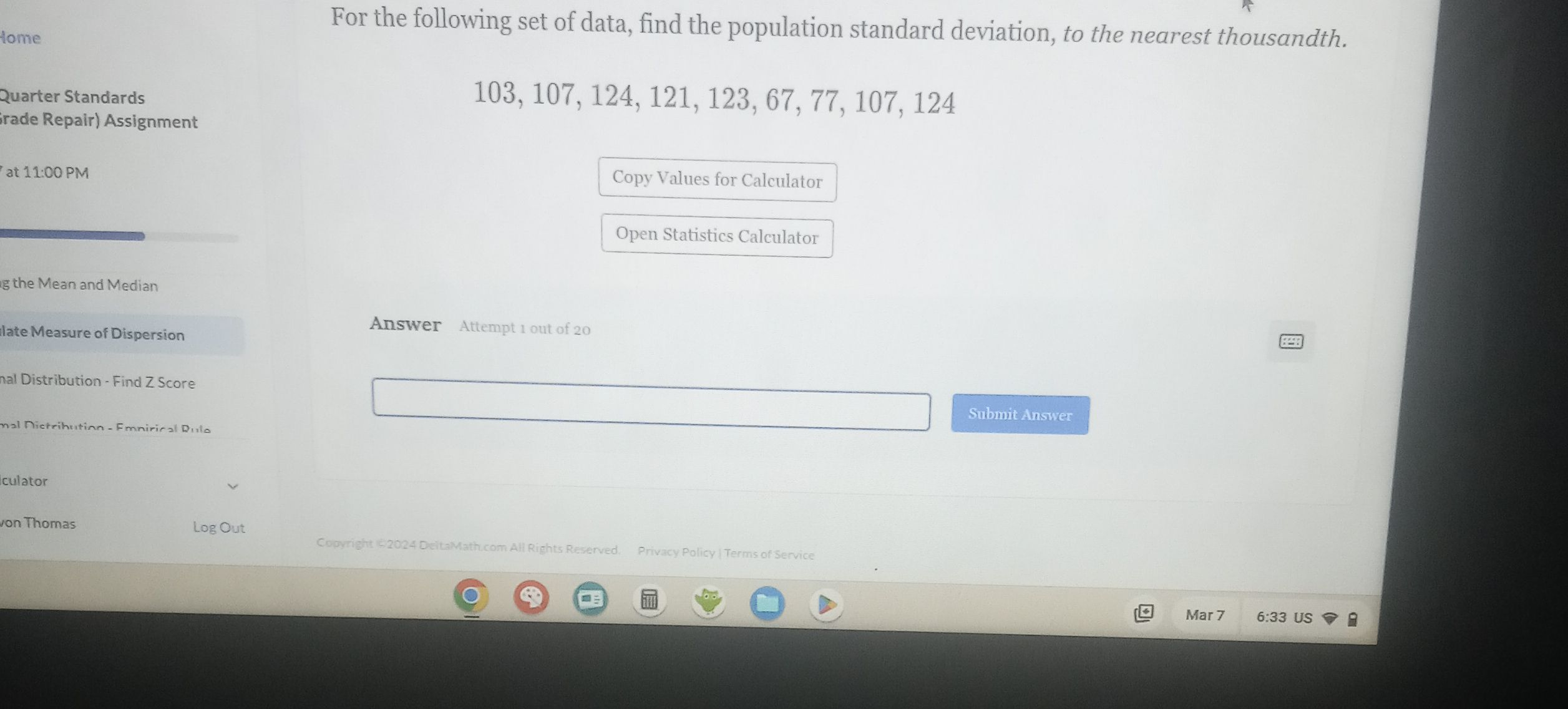Full solution
Q. For the following set of data, find the population standard deviation, to the nearest thousandth.
- List data set: List the data set and verify the number of data points.The data set given is: .Count the number of data points to ensure none are missing.There are data points in total.
- Calculate mean: Calculate the mean (average) of the data set.The mean is calculated by adding all the data points together and then dividing by the number of data points.Mean = Mean = Mean =
- Subtract and square: Subtract the mean from each data point and square the result.This step is part of calculating the variance, which is the average of the squared differences from the Mean.
- Sum squared differences: Sum the squared differences.Add all the squared differences together to get the total sum.Total sum = Total sum =
- Calculate variance: Calculate the variance.Since we are dealing with a population standard deviation, we divide the total sum of squared differences by the number of data points .
- Calculate standard deviation: Calculate the population standard deviation.The standard deviation is the square root of the variance.Standard deviation = Standard deviation = Standard deviation
- Round standard deviation: Round the standard deviation to the nearest thousandth.The standard deviation rounded to the nearest thousandth is .
More problems from Percent error: word problems
QuestionGet tutor help
QuestionGet tutor help
QuestionGet tutor help
QuestionGet tutor help
QuestionGet tutor help

